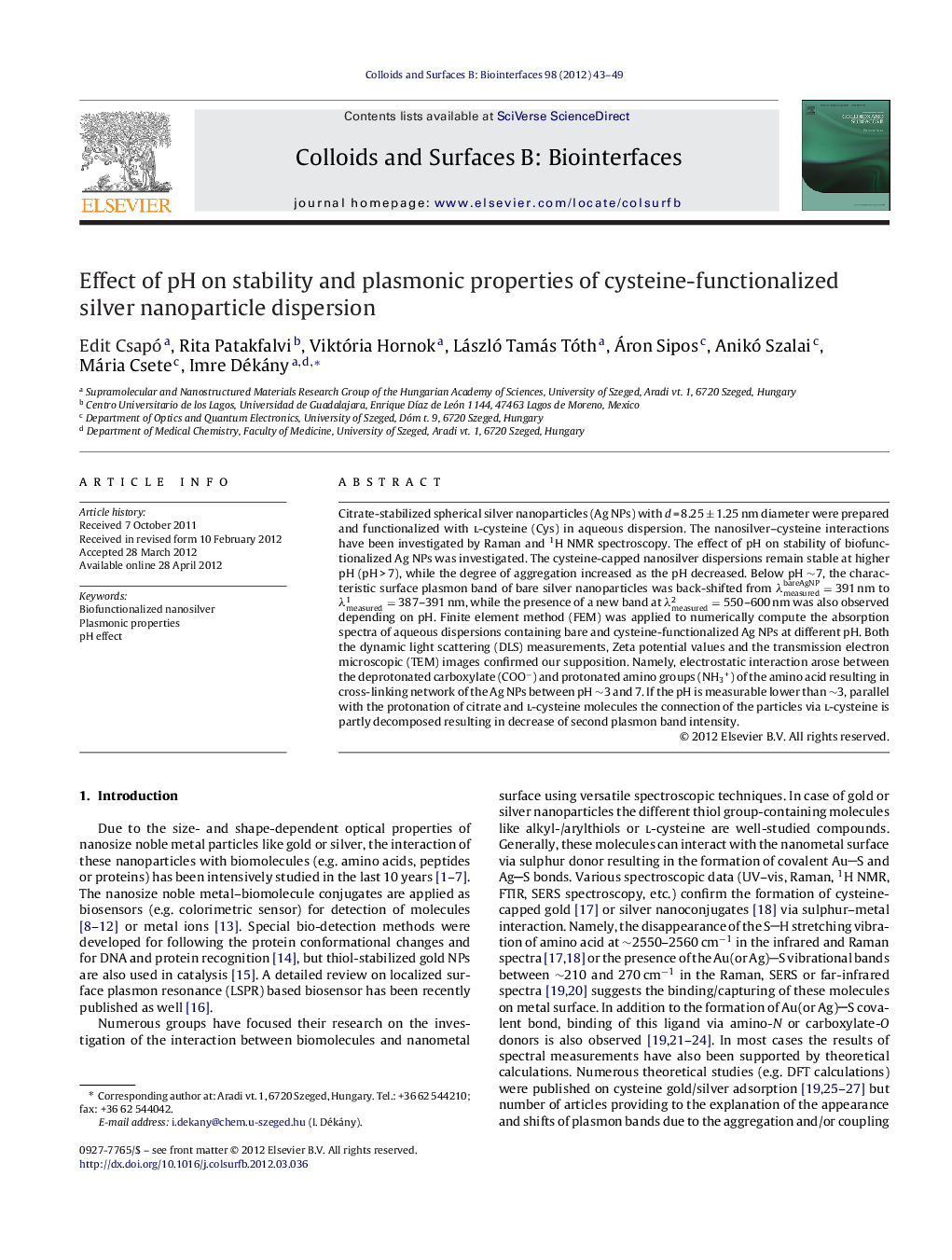| کد مقاله | کد نشریه | سال انتشار | مقاله انگلیسی | نسخه تمام متن |
|---|---|---|---|---|
| 600617 | 1454306 | 2012 | 7 صفحه PDF | دانلود رایگان |

Citrate-stabilized spherical silver nanoparticles (Ag NPs) with d = 8.25 ± 1.25 nm diameter were prepared and functionalized with l-cysteine (Cys) in aqueous dispersion. The nanosilver–cysteine interactions have been investigated by Raman and 1H NMR spectroscopy. The effect of pH on stability of biofunctionalized Ag NPs was investigated. The cysteine-capped nanosilver dispersions remain stable at higher pH (pH > 7), while the degree of aggregation increased as the pH decreased. Below pH ∼7, the characteristic surface plasmon band of bare silver nanoparticles was back-shifted from λmeasuredbareAgNP=391 nm to λmeasured1=387–391 nm, while the presence of a new band at λmeasured2=550–600 nm was also observed depending on pH. Finite element method (FEM) was applied to numerically compute the absorption spectra of aqueous dispersions containing bare and cysteine-functionalized Ag NPs at different pH. Both the dynamic light scattering (DLS) measurements, Zeta potential values and the transmission electron microscopic (TEM) images confirmed our supposition. Namely, electrostatic interaction arose between the deprotonated carboxylate (COO−) and protonated amino groups (NH3+) of the amino acid resulting in cross-linking network of the Ag NPs between pH ∼3 and 7. If the pH is measurable lower than ∼3, parallel with the protonation of citrate and l-cysteine molecules the connection of the particles via l-cysteine is partly decomposed resulting in decrease of second plasmon band intensity.
Figure optionsDownload as PowerPoint slideHighlights
► Binding of cysteine to nanosilver surface is revealed by Raman spectroscopy.
► Observed plasmon bands suggest different aggregation state as a function of pH.
► No aggregation is observed above pH ∼7 due to the lack of second plasmon band.
► Due to the attractive forces the highest aggregation occurs between pH 3 and 7.
► Numerical calculations and TEM confirm the chain-like interconnection of NPs.
Journal: Colloids and Surfaces B: Biointerfaces - Volume 98, 1 October 2012, Pages 43–49